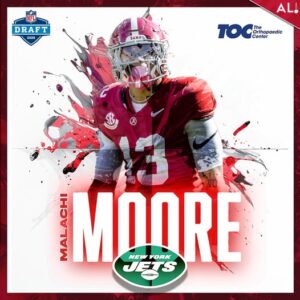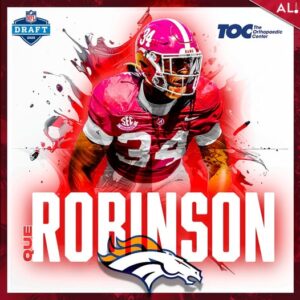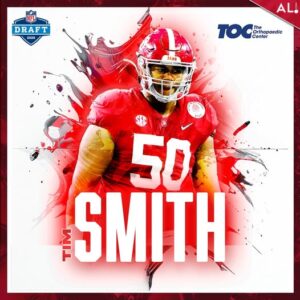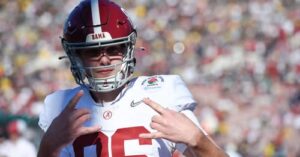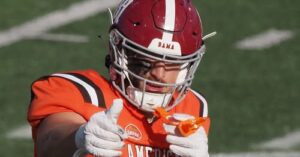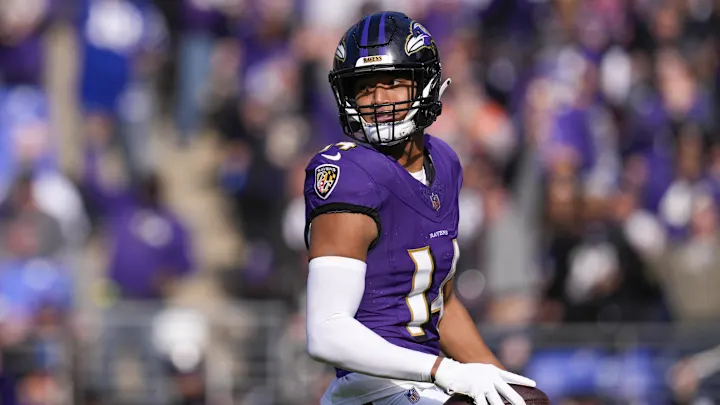
At key positions, the Baltimore Ravens have an excellent NFL Draft record.
The NFL Draft is the lifeblood of any successful football franchise. For the Baltimore Ravens, it has been a primary tool for building championship-caliber teams year after year. Over the past two decades, the Ravens have built a reputation as one of the most adept drafting teams in the league, particularly at key positions that have shaped their success on both sides of the ball. With a well-established history of hitting on early picks and uncovering hidden gems in later rounds, the Ravens’ draft record stands out. In particular, their success in drafting quarterbacks, wide receivers, and defensive players has played a major role in the team’s sustained excellence.
Quarterback: A Legacy of Stability and Success
Though not often associated with early-round quarterback investments, the Ravens have had significant success in this department. The team’s most famous draft success at quarterback came in 2008, when they selected Joe Flacco out of Delaware in the first round. Flacco would go on to lead the Ravens to an impressive 10-season career, culminating in a Super Bowl victory during the 2012 season and earning the Super Bowl MVP award.
Flacco’s selection marked a turning point for the franchise. Before Flacco’s arrival, the Ravens had experienced struggles at the quarterback position, despite having a formidable defense. His ability to perform under pressure, including orchestrating a playoff run that ended with a Super Bowl title, was a testament to the Ravens’ aptitude for recognizing talent in non-traditional spots.
Flacco’s success laid the groundwork for the Ravens’ subsequent quarterback investments, including their trade up for Lamar Jackson in 2018. Jackson, selected with the 32nd overall pick, has since redefined the quarterback position. His dual-threat ability, highlighted by his MVP campaign in 2019, has made him one of the most dangerous quarterbacks in the NFL. Jackson’s acquisition wasn’t just a draft win—it was a transformative move that has reshaped the Ravens’ offensive identity.
The Ravens have shown time and again that they can identify quarterbacks who can thrive in their system, whether it’s a traditional pocket passer like Flacco or a dynamic, mobile quarterback like Jackson. Both players helped elevate the team’s performance in their respective eras, making quarterback a key position where the Ravens consistently excel in the draft.
Wide Receiver: The Quest for Playmakers
Historically, the Ravens have been criticized for a lack of top-tier wide receivers. However, in recent years, the team has made significant strides in bolstering its receiving corps through the draft. While some teams focus heavily on landing elite wideouts early in the draft, Baltimore has remained patient and methodical in its approach.
The most recent success story in this regard came in 2021 when the Ravens selected wide receiver Rashod Bateman out of Minnesota with the 27th overall pick. Bateman was immediately projected to be a crucial asset in Baltimore’s passing game. His polished route-running and ability to make plays on the boundary have provided Lamar Jackson with a much-needed weapon, especially with the departure of long-time receiver Hollywood Brown.
Additionally, the Ravens have made the most of later-round wide receiver selections. In 2015, they drafted Breshad Perriman, who showed flashes of brilliance but ultimately didn’t live up to expectations. However, their ability to unearth gems like Marquise “Hollywood” Brown (drafted in 2019) and Devin Duvernay (drafted in 2020) has helped the team steadily improve at this position.
One key example of Baltimore’s ability to find undervalued talent came in 2014, when they selected Steve Smith Sr. out of free agency. While not through the draft directly, the Ravens’ knack for identifying talent across all levels of the NFL—be it free agency, trades, or the draft—allowed them to make the most of a player who would later become one of the most reliable and productive receivers in team history.
The wide receiver position has long been one of the most difficult for the Ravens to consistently draft well, but recent successes like Bateman, Brown, and Duvernay are indicative of a shift in how Baltimore builds its offense.
Defensive Talent: The Heart and Soul of the Ravens
One area where the Ravens have consistently excelled over the years is the defense. For Baltimore, it is hard to separate their identity from the powerhouse defenses that have been synonymous with the franchise. Their ability to draft defensive players, particularly at linebacker and in the secondary, has made them perennial contenders on that side of the ball.
The Ravens’ defensive draft history is a treasure trove of elite talent. One of their most iconic selections came in 1996 when they drafted linebacker Ray Lewis, a player who would go on to become a Hall of Famer and the leader of one of the most dominant defenses in NFL history. Lewis’ leadership, along with the Ravens’ ability to continue drafting high-caliber linebackers, has defined the franchise’s defensive identity.
In more recent drafts, Baltimore has continued its strong tradition of selecting standout defensive players. The team’s ability to identify and draft exceptional players on defense was evident in 2018 when they drafted linebacker Patrick Onwuasor and cornerback Marlon Humphrey, two players who have become cornerstones of the defense. Humphrey, in particular, has been a standout, evolving into one of the top cornerbacks in the league since being drafted in the first round of the 2017 draft.
The Ravens have also shown an incredible knack for finding defensive talent later in the draft. Players like safety Chuck Clark (sixth round, 2017) and linebacker Matthew Judon (fifth round, 2016) have provided valuable contributions to the defense, making Baltimore one of the best teams at developing defensive talent. In fact, the Ravens have produced numerous Pro Bowl-caliber defenders through their draft picks over the years, creating an identity rooted in defensive excellence.
The Ravens’ Draft Philosophy: Building Through the Trenches
While the Ravens are often lauded for their offensive and defensive skill players, one area that is often overlooked but just as critical to their success is their focus on the trenches. The Ravens consistently prioritize building a strong offensive and defensive line, and their drafting history in this regard has yielded impressive results.
The team’s most notable success came in 1996 when they selected future Hall of Famer Jonathan Ogden as the fourth overall pick. Ogden anchored the Ravens’ offensive line for over a decade and became one of the best left tackles in NFL history. His protection of quarterbacks like Flacco and Jackson helped the team maintain stability on offense.
Baltimore has also consistently invested in defensive line talent, with recent selections like Justin Madubuike (third round, 2020) and Calais Campbell (trade acquisition, 2020) providing stability and leadership. Their ability to control the line of scrimmage on both sides of the ball has played a significant role in their sustained success.
A Drafting Legacy to Be Proud Of
The Baltimore Ravens have built their identity on a rich NFL Draft history that has produced elite quarterbacks, defensive stalwarts, and offensive playmakers. The team’s ability to identify and develop talent at key positions is a testament to their scouting prowess and commitment to long-term success.
Whether it’s selecting a quarterback who will lead them to a Super Bowl title, finding the perfect wide receiver to complement their offensive scheme, or building an elite defense through well-timed draft picks, the Ravens have proven time and again that they can draft with the best of them.
Their success in the NFL Draft has been one of the key reasons the team has remained competitive year in and year out, and as the 2025 draft approaches, there’s no reason to think that the Ravens’ commitment to finding talent will waver. The legacy of excellence that Baltimore has built through the draft continues to set the foundation for a bright future.

